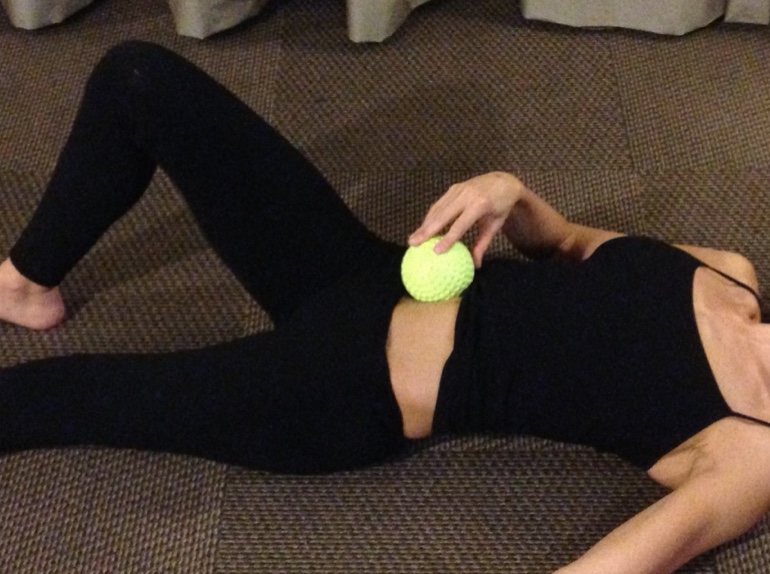Hip pain and dysfunction are common problems with most tennis athletes from the recreational to professional level. The purpose of this article is to teach the tennis athlete how to safely and effectively create joint mobility and flexibility in the hip to allow for optimal movement on the tennis court. Simple self-assessment techniques can be used to determine if there is dysfunction in mobility of the hip. This article will utilize a softball, foam roller and superbands to self-treat the appropriate source of dysfunction.
Brief Review of Anatomy of the hip
The femoroacetabular joint or hip joint is a ball and socket joint. It is surrounded by a thick and stable joint capsule. This capsule can get tight over time and create dysfunctional articulation of the joint. The hip joint is surrounded by an intricate group of muscle working together to create stability and mobility. For the purpose of this article we will just focus on the soft tissue restrictions of the iliopsoas, adductor magnus , TFL (tensor fascia lata) and improving posterior hip joint mobility.
Normal tennis movements require a combination of force development and mobility of the hip. Ample hip extension, internal and external rotation of the hip is necessary for optimal performance on the tennis court. Shortening of the hip flexors and tightness of the hip rotators are a common result of prolonged sitting and a lack of warm up and post recovery work.
Below are two simple tests that a tennis athlete can perform on themselves before they play. If they fail then the proper corrective exercise should be performed until the test can be passed.
Self-test
- Self-FABER: Lying supine with figure 4 position allowing knee to drop laterally as far as possible. If there is tightness in the lateral hip it is most likely TFL. If there is medial tightness it is most likely adductor magnus.
- 2. Self-FADIR: Hugging knee toward chest in supine with internal rotation. If there is binding or pinching in front of the hip then anterior impingement and iliopsoas involvement is likely.
Self-Correction:
Myofascial Restriction
- Adductor Magnus Tightness: roll the adductor until area of discomfort/soft tissue restriction is found. Then trigger point release the area by providing direct pressure for 30-90sec. Follow up with small oscillation of the area until at least 50% less painful.
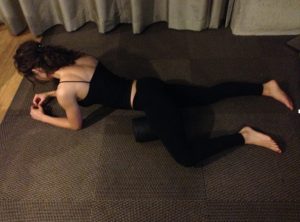
- TFL Tightness: roll the TFL until area of discomfort/soft tissue restriction is found. Then trigger point release the area by providing direct pressure for 30-90sec. Follow up with small oscillation of the area until at least 50% less painful.
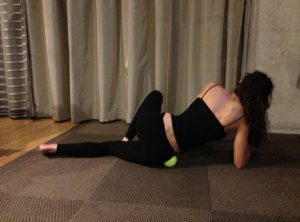
- Iliopsoas Tightness: Release the iliacus by pressing the softball medial to the iliac crest and rotate bent knee from out to in. Release the psoas by performing heel slides while maintaining pressure with the softball down through the abdomen just lateral of midline.
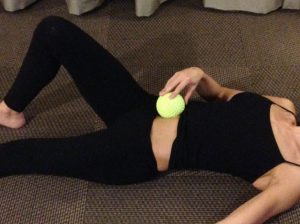
Posterior Hip Joint Restriction
- Lunge forward with the superband pulling posteriorly on the hip joint. Oscillate at end range until optimal hip extension is achieved.
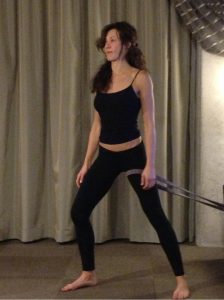
Using these simple diagnostic techniques and corrections with help the tennis athlete improve hip mobility over time, optimizing performance and reducing the risk of injury.
Jeff Vajay, PT, USPTA
Jeff works as a sports physiotherapist at Impact Orthopaedics in Raleigh, NC. He also is a physiotherapist for the ATP Tour and formerly the USTA Pro-circuit. Jeff has been treating sports related injuries and helping athletes reach their maximum potential for the past 12 years.

